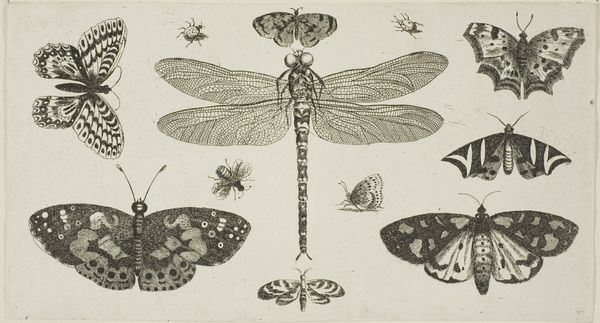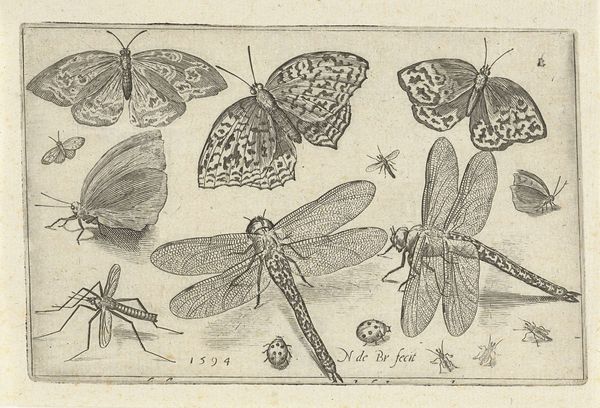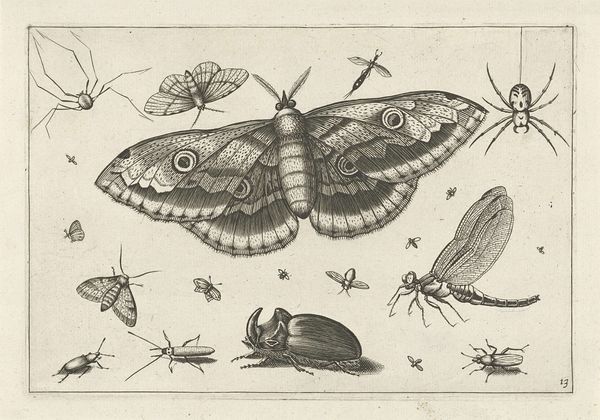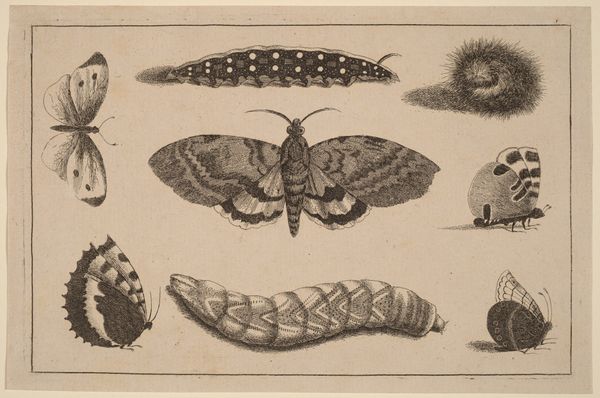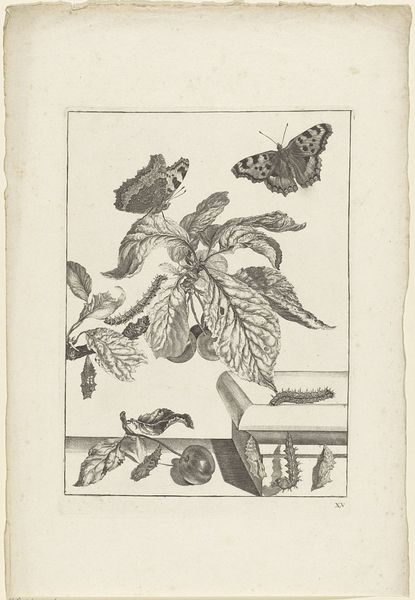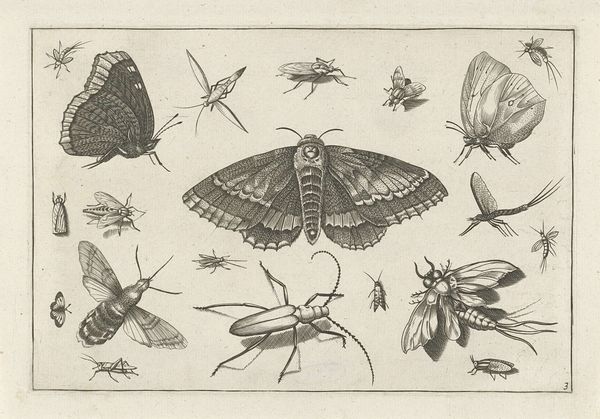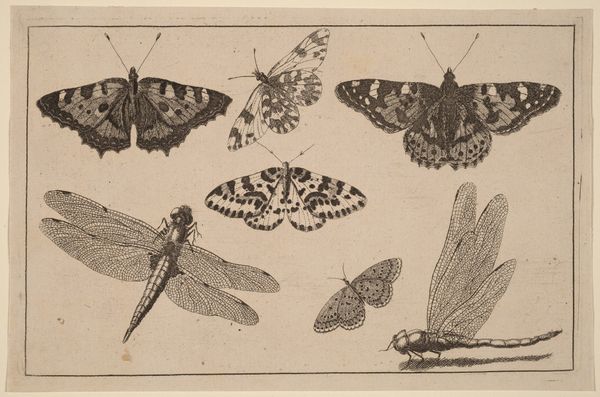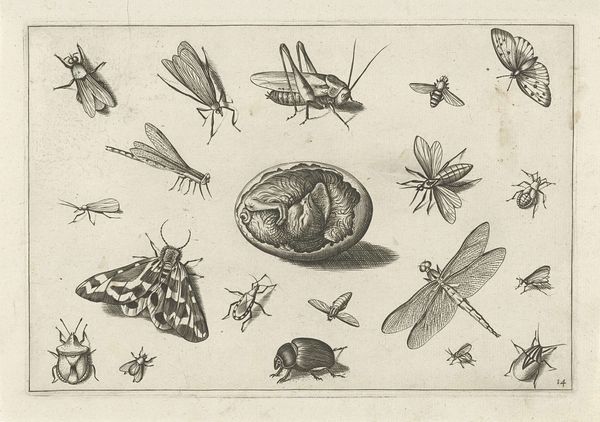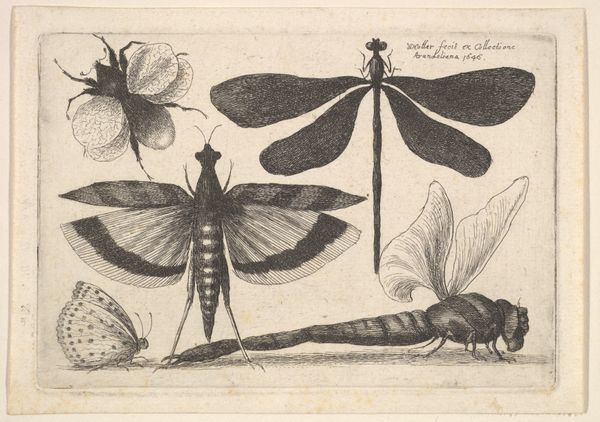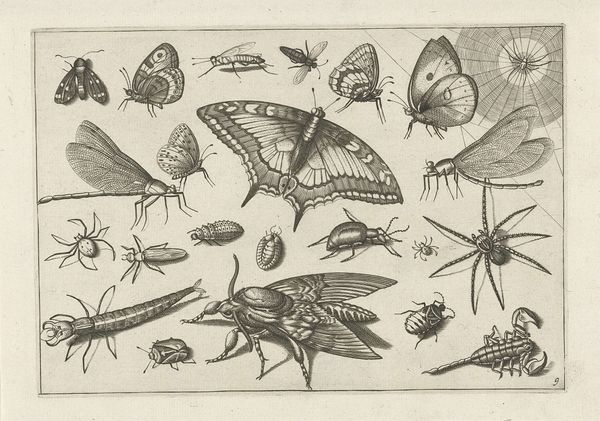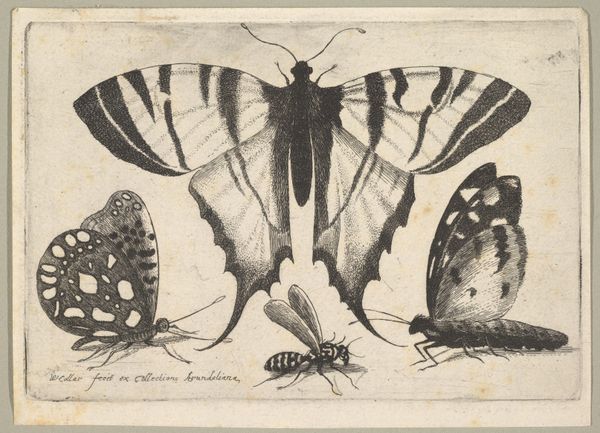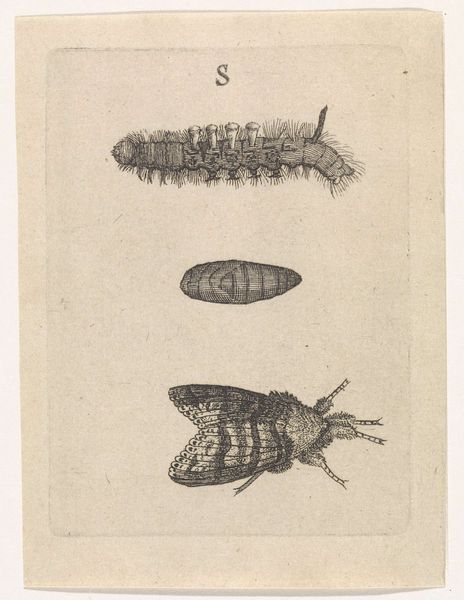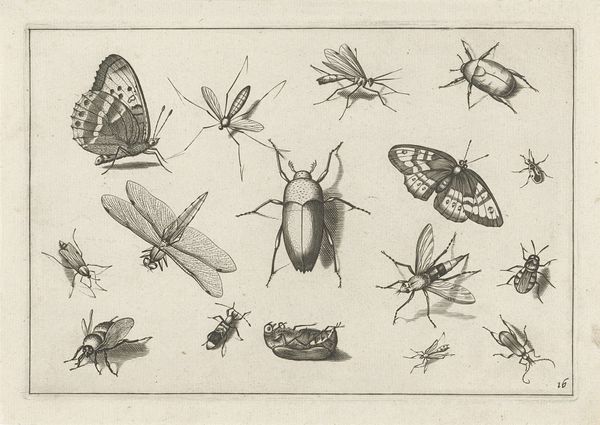
drawing, paper, ink, pencil
#
drawing
#
baroque
#
pencil sketch
#
paper
#
ink
#
pencil
Dimensions: height 91 mm, width 45 mm
Copyright: Rijks Museum: Open Domain
Curator: Ah, here we have a drawing titled "Libelle en twee nachtvlinders," which translates to "Dragonfly and two moths." Pieter Lyonet created this lovely piece sometime between 1716 and 1789, using ink and pencil on paper. What are your initial thoughts? Editor: My first impression is delicate intricacy, like a whisper captured on paper. The insects seem incredibly fragile, their forms outlined with the utmost care. There's a strange sense of quiet melancholy to it, wouldn't you agree? Curator: Absolutely. Dragonflies, in many cultures, are associated with change, transformation, adaptability, and self-realization. The dragonfly may represent going past self-created illusions that limit growth, in order to reveal one's true identity. It makes one wonder about Lyonet's intentions behind pairing them with moths, creatures typically associated with the night. Editor: Perhaps he saw a duality, a balance between light and darkness. Dragonflies are creatures of the day, agile and vibrant, while moths emerge when the sun sets, drawn to the dimmest light. Their pairing could symbolize a spectrum of experience, from awareness to the subconscious. It kind of feels like looking into an entomological Rorschach test, doesn’t it? Curator: In terms of technique, you see how Lyonet used different densities of pencil to render different degrees of shadows in the wings and bodies of these insects, bringing dimension and detail to these minute creatures, as though he were observing them with a microscope. Editor: And I see the delicate lines hinting at the moth's wings, and the slightly rougher, more definite strokes that create the dragonfly, almost like a visual representation of their respective lifecycles – one fleeting, the other more enduring. This all seems rather profound for what at first glance seems like a simple scientific illustration. Curator: True. Lyonet had a knack for investing his depictions of nature with symbolic weight. It's precisely this blend of scientific precision and allegorical depth that continues to resonate centuries later. Editor: I feel it speaks to the endless capacity for reflection that the natural world stirs within us, a world viewed not as a static observation, but as a rich, potent source for metaphor. Curator: Indeed. I’m also struck by how these creatures continue to evolve, shape shift, and thrive while adapting to new natural elements, in their struggle for survival. Editor: Well, that’s an outlook on this work of art I didn’t imagine exploring. Always a revelation, looking closely.
Comments
No comments
Be the first to comment and join the conversation on the ultimate creative platform.
